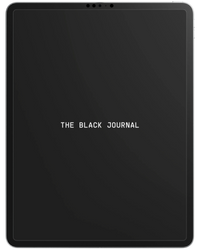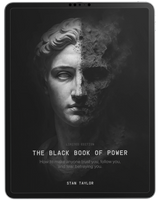You're sitting across from your colleague at lunch, watching them describe their mother's cancer diagnosis. Their voice cracks. Your chest tightens. You reach across the table, your eyes welling up with their pain. Later that afternoon, you scroll past a fundraiser for Syrian refugees—thousands of children starving—and feel nothing. You keep scrolling. That evening, your partner complains about their day, and you find yourself checking your phone, their words washing over you like white noise. You catch yourself and refocus, manufacturing the appropriate concerned expression, but inside you're calculating whether you have time to go to the gym.
You have just demonstrated that empathy isn't a fixed moral virtue living in your character but a skill you deploy selectively, strategically, and sometimes manipulatively based on context, training, and motivation.
The word "empathy" didn't even exist in English until 1909, when psychologist Edward Bradford Titchener translated the German Einfühlung to describe the projection of human feelings onto the natural world—feeling the weight of mountains, the rise of columns. The concept has evolved from aesthetic appreciation to interpersonal understanding to moral imperative, but recent neuroscience reveals empathy operates less like an innate moral sense and more like a language you learn. And like any language, it can be taught, forgotten, weaponized, or deliberately refused.
This distinction matters because we've built entire moral frameworks on the assumption that empathy is the bedrock of human goodness—that psychopaths lack it, saints overflow with it, and the rest of us fall somewhere on a fixed continuum. But research from the Netherlands revealed that psychopathic criminals can activate empathy on command when explicitly instructed to do so. Medical students systematically lose empathy during their training, with measurable declines beginning precisely in Year 3 when they start seeing patients. Professional actors score significantly higher on empathy measures because they've trained to feel strategically—to summon and dismiss emotions like switching between apps.
The Neuroscience of Empathy as Practice
Your brain doesn't have an "empathy center" that's either strong or weak, active or broken. Instead, neuroscientist Tania Singer's groundbreaking ReSource Project tracked 332 participants through nine months of mental training, demonstrating that different practices produce distinct, measurable changes in brain structure and function. After just three months of compassion meditation, participants showed increased gray matter density in regions associated with emotional regulation and social cognition (the right inferior frontal gyrus and dorsomedial prefrontal cortex), while empathy training activated entirely different networks associated with pain and distress.
Empathy and compassion are neurologically antagonistic. Klimecki and Singer's 2014 study found that when participants were trained in empathy (feeling others' suffering), they showed increased activation in the anterior insula and anterior midcingulate cortex—your brain's alarm system. They reported feeling worse. But when the same participants were then trained in compassion (caring for others' wellbeing without taking on their suffering), activation shifted to reward-related regions like the ventral tegmental area and medial orbitofrontal cortex. They felt better while witnessing the exact same suffering. One depletes you; the other sustains you. Both are trainable. Neither is automatic.
The speed of these changes demolishes any notion of empathy as a fixed trait. Real-time fMRI neurofeedback studies show participants can learn to voluntarily control their anterior insula—a core empathy region—within a single session, with effects persisting beyond the training. Your empathy circuitry responds to practice like muscles respond to exercise, except the changes happen in hours, not months.
The Psychopath's Switch and the Narcissist's Tool
The most unsettling evidence comes from a 2013 study at the University of Groningen, where researchers transported violent psychopathic criminals to an fMRI scanner. Without instructions, the psychopaths showed dramatically reduced activation in mirror neuron regions while watching others experience pain—their empathy appeared offline. But when explicitly told to empathize, the activation patterns normalized almost completely. They didn't lack the capacity for empathy; they lacked the automatic tendency to use it.
Christian Keysers, the study's senior author, described this as "a switch that can be turned on deliberately." The psychopath possesses what The Black Book of Power calls "weaponized empathy"—the ability to understand your emotional state without being contaminated by it, to map your psychological genome while remaining emotionally sovereign. This is a skill set. The same cognitive empathy that enables therapeutic breakthrough enables calculated manipulation.
Research on narcissistic personality disorder reveals the same selective deployment. Narcissists don't uniformly lack empathy—they demonstrate intact or even superior cognitive empathy (understanding others' mental states) while showing deficits in affective empathy (sharing others' feelings). They read you accurately to exploit you efficiently. A University of Michigan study found that people scoring high on measures of manipulation were just as skilled at emotion recognition as those scoring high on empathetic concern. The difference was application.
Medical School is Where Empathy Goes to Die
If empathy were an innate virtue, medical training should enhance it. Instead, the largest study of medical student empathy tracked 10,751 osteopathic students across 41 schools, finding the consistent pattern that empathy remains stable during the first two years of classroom learning, then significantly declines when students begin clinical rotations in Year 3. The effect size of 0.13 was small but highly significant (p < .001) and remarkably consistent across institutions.
For MD students, longitudinal research at Jefferson Medical College found even steeper declines—effect sizes of 0.43-0.45 between Year 2 and graduation. This is trained suppression. The "hidden curriculum" that I identify as the real education teaches students that emotional connection is inefficient, that "professional distance" is essential, that feeling too much will break you.
The medical establishment's response? Empathy training programs that show modest improvements (effect sizes around 0.5) but fail to address the systemic issue that the environment itself trains empathy away. By graduation, students have learned what The Black Book of Power calls "selective empathy" or resource management. They've discovered that unlimited empathy makes you everyone's emotional toilet.
Culture Programs Your Empathy Software
The most powerful evidence for empathy as a learned skill comes from cross-cultural research spanning 104,365 adults across 63 countries. Ecuador, Saudi Arabia, and Denmark top the empathy rankings—nations with nothing in common except their cultural emphasis on collective emotional attunement. Lithuania, Venezuela, and Bulgaria rank lowest, despite vastly different political systems. The variable is cultural training in what emotions deserve attention and response.
Studies comparing collectivist and individualist cultures found that East Asian participants show higher personal distress when witnessing suffering (feeling overwhelmed by others' pain) while showing lower empathic concern (feeling for the other). Western participants show the opposite: more other-oriented concern, less personal overwhelm. Neither is more "natural." Both are culturally trained responses. You don't have empathy—you have culturally-specific empathy software installed through thousands of social interactions.
Even more striking, bicultural individuals score between their two cultures on empathy measures, demonstrating that exposure to multiple cultural frameworks literally rewires your empathic responses. You can run multiple empathy operating systems, switching between them based on context—code-switching your compassion.
The Dark Side of Understanding
But surely, you might think, empathy leads to moral behavior—understanding others' pain motivates helping them. The evidence suggests otherwise. fMRI studies of intergroup empathy show that people exhibit reduced activation in empathy networks when viewing out-group members' pain. Worse, they show activation in reward centers—actual pleasure—when rivals suffer. The same neural circuits that generate empathy for "us" generate schadenfreude for "them."
My framework of "empathy as reconnaissance" explains how understanding others' emotions becomes a tool for exploitation. The con artist doesn't lack empathy—they excel at it, reading your emotional vulnerabilities to craft the perfect manipulation. The concept of "dark empathy" describes individuals who combine high cognitive empathy with dark triad traits (narcissism, psychopathy, Machiavellianism). They understand your pain precisely so they can cause it more effectively.
Paul Bloom's Against Empathy makes the philosophical case that empathy is "a spotlight focusing on certain people in the here and now," creating moral myopia. The identifiable victim effect shows we donate more to one named suffering child than to statistics about thousands dying. Empathy doesn't scale. It can't. Our neural architecture for emotional resonance evolved for small tribes. Compare that with your thinking on global justice.
Training Your Empathy From Reaction to Choice
If empathy is a skill, it can be deliberately developed—or deliberately constrained. Compassion training studies show effect sizes of 0.5-0.7 for increasing prosocial behavior after just two weeks of practice. The distinction is that most effective interventions don't train empathy (feeling others' pain) but compassion (caring without merging). The difference between drowning with someone and throwing them a rope.
The practical protocol is surprisingly straightforward. Start with what The Black Book of Power calls "empathy fasting"—a deliberate period of responding to others' emotional bids with clinical curiosity rather than emotional matching. When someone shares their distress, practice saying "That sounds difficult" instead of feeling their difficulty. Notice how people escalate their emotional performance when you don't provide the expected empathetic response. You'll see how much of human interaction is what I call "emotional extortion disguised as connection."
Next, practice selective deployment. Choose three people who deserve your full empathic engagement. For everyone else, maintain what I call "professional distance"—understanding without absorption. This is conservation. As I put it: "Unlimited empathy makes you everyone's emotional toilet."
For those whose work demands sustained empathic engagement, the evidence supports structured recovery. Healthcare workers who practice compassion meditation show reduced burnout compared to those who simply try to "care more." The difference is technique: generating warmth and concern while maintaining clear self-other boundaries, what Buddhist psychology calls "equanimity."
If you recognize yourself weaponizing empathy—using emotional intelligence for manipulation rather than connection—the intervention is different. My "Three-Gate Test" provides an ethical framework: Is it true? Is it respectful? Is it necessary? Before deploying your empathic skills to influence someone, run your intention through these gates. Most manipulation fails at the second gate—using someone's emotions against them violates respect, even if you understand those emotions perfectly.
The hardest practice might be accepting empathy's limitations. When you feel overwhelmed by the world's suffering, remember that your nervous system wasn't designed for global awareness. You can't feel for everyone. Trying to will break you. Choose your empathic investments deliberatel based on where your understanding can translate into effective action.
Empathy is the Skill You Choose to Develop
One last point deserves emphasis: recognizing empathy as a trainable skill rather than an innate virtue fundamentally reshapes moral responsibility. You're not a good person because you automatically feel others' pain—plenty of malignant narcissists excel at emotional resonance when it serves them. You're not a bad person if empathy doesn't come naturally—individuals on the autism spectrum can be deeply moral without typical empathic responses.
The science converges on an uncomfortable truth: empathy is amoral technology, equally available for healing and harming, depending on who deploys it and toward whom. As I argue in The Black Book of Power, the distinction between the therapist using empathy to heal and the con artist using it to steal is intention. Both understand your emotional vulnerabilities. Both create connection. Both influence behavior. The ethics lie in the choice.
Perhaps the most radical implication is this: if empathy is a skill, we can stop moralizing its presence or absence and start asking better questions. Not "Are you empathetic?" but "How have you trained your empathy? Toward whom do you deploy it? What are you using it for?" We can design educational systems that teach sustainable compassion rather than emotional fusion, professional training that maintains empathy without depleting practitioners, and personal practices that balance understanding others with protecting ourselves.
The actor shows us what's possible: someone who has trained to feel and not feel, to understand emotions without drowning in them, to connect deeply while maintaining sovereignty—what I call becoming a "marble statue in a hurricane." That's mastery of feeling. And like any mastery, it's available to anyone willing to practice.





